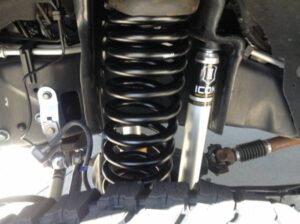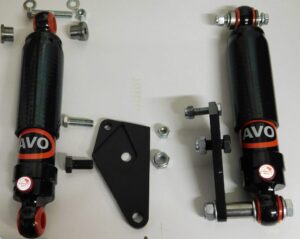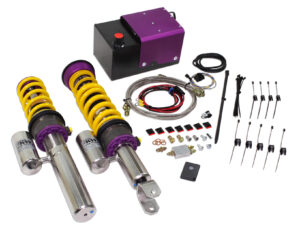A suspension system is one of the most vital parts that are present in an automobile, most people don’t recognize it by its name, it is connected to the wheel which generally looks like a spring. The spring helps in the shock-absorbing process which helps us experience a smooth ride since no road is perfectly paved the irregularities on the roads (especially in India) result in generating different forces which act on the wheel unnecessarily. These forces are controlled by the suspension.
Today automobile designers are more focused on achieving a better driving experience by improvising the suspension system. Several types of suspension systems are now available in the automobile industry, one of them being hydraulic suspension. It is interesting to understand the working of a hydraulic suspension system.
The first type of hydraulic suspension was created by Citroen and designed by Paul Mages. The purpose of then creating the hydraulic suspension was to attach it to cars and trucks. But in this modern age, this system has been introduced to various military vehicles and tanks.
Every car, truck, and utility vehicle has a suspension that is designed to do three things:
- Support the vehicle
- Absorb bumps and other shocks
- Allow the vehicle to turn in response to steering input from the driver
Table of Contents
Elements Of The Suspension System:
- Spring
- Damper
Let us discuss some pointers from each of them.
1. Springs
Springs are resilient members and as such act as reservoirs of energy. They store the energy due to the sudden force that comes when the vehicle encounters a bump or a ditch. This energy is released subsequently and with the action of the damper, the energy is converted into heat, and bounce is avoided. Springs used for the suspension system should absorb road shocks quickly and return to the original position slowly.

Types Of Springs:
- Leaf spring
- Coil spring
- Torsion bars
- Air and gas spring
- Rubber spring
2. Damper
They reduce the tendency of the carriage unit to continue to “bounce” up and down on its springs.
Oscillation due to road shocks is restricted to a reasonable level by the damper.
Types Of Dampers
- Telescopic damper
- Rocking lever damper
Today automobile designers are more focused on achieving a better driving experience by improvising the suspension system. Several types of suspension systems are now available in the automobile industry, one of them being hydraulic suspension. It is interesting to understand the working of a hydraulic suspension system.
The first type of hydraulic suspension was created by Citroen and designed by Paul Mages. The purpose of then creating the hydraulic suspension was to attach it to cars and trucks. But in this modern age, this system has been introduced to various military vehicles and tanks. But if you ever wondered how the hydraulic suspension works? Read on below to know the answer!

Working Of Hydraulic Suspension System
The hydraulic suspension consists of a hydraulic liquid which is a type of oil that is put inside a tube and attached to the spring also a compressed gas is present in the inner chambers of the tube of the suspension system, a set of such hydraulic springs are attached creations how increations how a certain pattern. This system is then attached to the wheel.
The suspension absorbs the shock generated by the wheels and pumps in the hydraulic liquid, i.e, whenever the wheel moves through an irregular road the wheel pumps in the hydraulic liquid inside the tube forcing it inside, while the fluid collides with the compressed gas, the gas forces it back to its original state, while this phenomenon generates an opposition force, this force allows the spring of the suspension system to control the wheel. Allowing the wheel to have a tighter and better grip on the road.
Key Elements Of Hydraulic Suspension:

- The reservoir of hydraulic fluid.
- The line to pump.
- Pump operating off the engine.
- Pressure regulator.Line taking pressurized fluid to the rear suspension.
- Lines leading to the shock absorbers.
- Metal spheres fitted to the shocks, each containing a synthetic rubber ball fillet! with inert gas.
- Swinging arm to which wheel is fitted.
- Stabilizing bar.
- Modified torsion bar of front suspension, longer and springier than those of previous production models.
Advantages of Hydraulic Suspension
- The hydraulic suspension generally provides a better driving experience as compared to other suspension systems such as steel springs.
- Its reaction time is faster than other systems, resulting in faster results hence preventing the chances of any road accidents.
- There are independent dampers present which ensures faster reaction time.
- Hydraulic suspension systems are adjustable, the driver of the vehicle can customize his or her own suspension suspension system for shock absorbance.
Disadvantages of Hydraulic Suspension
- Hydraulic systems are costly to produce and maintain, the cost for their maintenance would be too high for common people.
- People have now various and better options for suspensions and vehicles to choose from at a reasonable price.
- The possibility of fluid leakage is high and the cost for its repair work will be automatically high.
- Maintenance of the hydraulic suspension system is not easily available at every car repair shop.
Also Read: Understanding how Hydraulic Pumps Work
Frequently Asked Questions About Hydraulic Suspension System –
So, Here are some of Frequently Asked questions about what are the uses ,advantages and disadvantages,differenecs , of this Hydraulic Suspension System.
What Are Hydraulic Suspensions Used For?
Hydraulic suspension is used in the automobile industry , used to maximize the total /overall performance of a vehicle, Or we can say to absorb forces emerging from the road surface.
What Are The Pros And Cons Of a Hydraulic Suspension system?
PROS- Hydraulic suspension system provides greater force than mechanical pneumatic systems, they are very responsive and are faster than other suspension systems.
CONS- Hydraulic Suspension System leads to higher costing or we can say maintenance cost, can damage your tires, and sometimes the shocks can result in leaking or breaking down.
What Is the Difference Between Air Ride and Hydraulic Suspension?
Hydraulic suspension is similar to air ride in that both are used to lift and lower the suspension in custom cars and trucks, except hydraulics systems fill metal cylinders with hydraulic fluid, instead of filling rubber bellows with compressible air, but the benefits of air suspension far exceed that of hydraulic suspension in many ways.
What Is Progressive Hydraulic Cushions Suspension Technology?
The Progressive Hydraulic Cushions suspension technology was first developed for the Citroen C3 R5 WRC car. Citroen started off thinking about how the rally car can cushion the impact from the rough rally terrain.
What Is the Difference Between Leaf Spring Suspension and Hydraulic Suspension?
The hydraulic suspension system creates a better driving experience compared to the leaf spring suspension system. The hydraulic suspension system is that it is customizable. For instance, you can raise the shocks in your vehicle to totally different heights. The reaction time of the hydraulic system is better than a leaf spring suspension system
Conclusion
So this is how the hydraulic suspension system works. Although hydraulic suspensions are now being introduced in the automobile world for its customers, with all their benefits it’s still difficult to reduce the cost of such an excellent suspension system. That is why it is still not much popular among the common people, but when the day comes when efficiency in performance meets cost-effectiveness that would be the day when the hydraulic suspension would be used worldwide.



